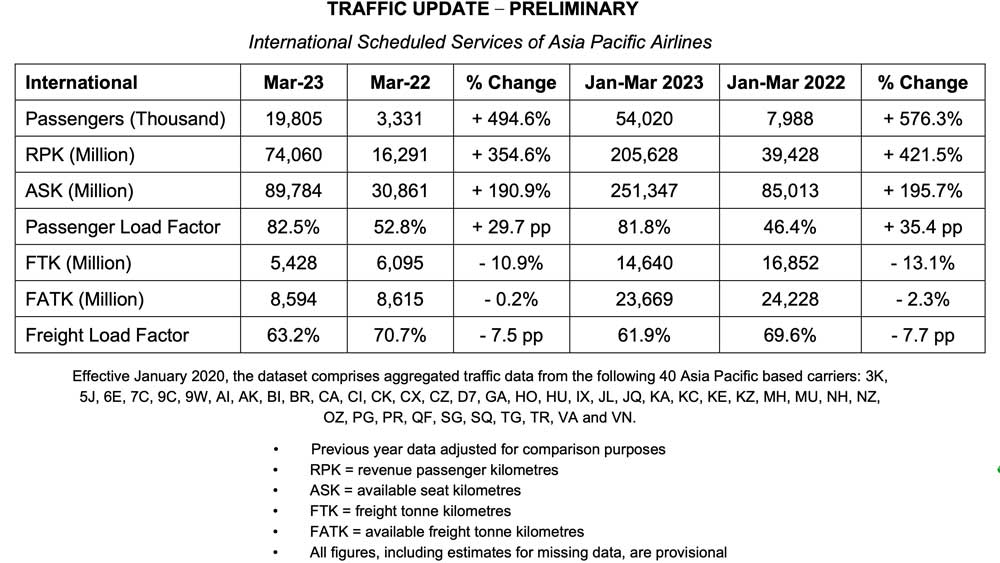Cargo markets for Asia Pacific airlines were lacklustre in March

A “prevailing weakness” in global trade continued to dampen demand for Asia-Pacific airfreight shipments in March.
As a result, the region’s carriers recorded a 10.9% year-on-year decline in international air cargo demand as measured in freight tonne kilometres (FTK).
According to preliminary monthly traffic figures released by the Association of Asia Pacific Airlines (AAPA) offered freight capacity remained relatively stable, with a 0.2% year-on-year decline, supported by the ongoing restoration of bellyhold capacity on passenger flights.
The average international freight load factor declined by 7.5 percentage points to 63.2% for the month.
However, Asia-Pacific passenger demand remained solid, driven by the robust recovery in leisure and business travel in Asia and globally.
The easing of travel restrictions, coupled with strong travel appetite, led to a 494.6% year-on-year increase in the number of international passengers carried which added up to 19.8m altogether in March.
Commenting on the results, AAPA Director General Subhas Menon said, “Asia Pacific airlines carried a combined total of 54m international passengers in the first quarter of 2023, well over six times the eight million passengers recorded in the same period last year. Demand continues to be robust as remaining travel restrictions are lifted across the region.”
“However, air cargo markets declined by 13.1% during the same period, reflecting weakness in consumer demand amidst general inflationary pressures and rising economic uncertainty.”
Looking ahead, Menon said: “Despite a more subdued global economic outlook, international passenger markets remain buoyant, as the rebuilding of travel confidence and return to face-to-face business meetings, continue apace.”
Menon added: “Asia Pacific carriers expect to see strong revenue growth this year even though increasing cost pressures, led by persistently high fuel prices, would erode the earnings margins.”
